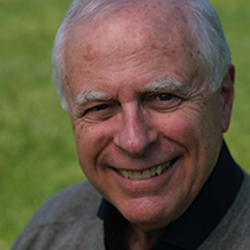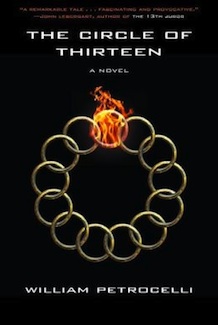Characters Who Invite Themselves into the Story by William Petrocelli
 A story may begin with an idea. It may even begin with a place, a memory, or a mood. But those things can easily fade and drift away until the writer is not really sure what he or she had in mind in the first place. The story only becomes real when a character invites herself into the story.
A story may begin with an idea. It may even begin with a place, a memory, or a mood. But those things can easily fade and drift away until the writer is not really sure what he or she had in mind in the first place. The story only becomes real when a character invites herself into the story.
I say “herself” when, of course, I could just as easily say “himself.” And, in fact, there is an important male character who invited himself into my novel The Circle of Thirteen at a very early point and has clung to the story like death. And that’s the problem. Wherever Jesse goes, bad things happen. He might have invited himself into the story, but he’s not someone you would ever invite out for a drink or welcome into your home for tea.
I feel much better about Julia and Maya – the two main female characters in the book. When the book was finished, I was happy that there were two important women characters that I still genuinely liked.
Julia needed no invitation to the story, because The Circle of Thirteen basically revolves around her. (The novel is mostly told through Julia’s first-person voice, but not entirely – Maya has a lot to say, and Jesse pokes his way into the narrative as well). Julia grew up just north of San Francisco and went to University at Berkeley. During the main part of the story in the early 2080’s she is living in New York, where she is the Security Director for the reinvigorated United Nations. She’s in her late 30’s, tall, physically strong, and not afraid of very much – except her own inner demons. Throughout the novel she is fighting the memory of her mother’s illness and death and the man she holds responsible.
 Maya arrived in the story by an entirely different route. She’s like the person who enters through the side-door of the opera house, looking for a job as an extra, only to have the director discover that she can sing a glorious soprano. In an early draft of the story Maya was simply one of a group of baby-sitters for Julia and other children in their co-housing community. At the time, that seemed like her only role in the story. Now I look back and say, what in the world was I thinking?
Maya arrived in the story by an entirely different route. She’s like the person who enters through the side-door of the opera house, looking for a job as an extra, only to have the director discover that she can sing a glorious soprano. In an early draft of the story Maya was simply one of a group of baby-sitters for Julia and other children in their co-housing community. At the time, that seemed like her only role in the story. Now I look back and say, what in the world was I thinking?
As Maya began convincing me, step-by-step, that she could do more for the story, her role kept expanding. In the end she became the glue that holds the book together. It’s Maya, a single working-mother in San Francisco in the chaotic decade of the 2030’s, who finds an orphaned girl who later grows up to become Julia’s mother. And it is Maya who raises Julia and helps her become the strong woman that she is. And, in a crucial role, it is Maya who becomes the link with the Women for Peace leaders – the women in the “Circle of Thirteen” of the title. These women are at the moral core of the story, and in a real sense they end up speaking through Maya.
That said, I admit it sounds weird for an author to say that he converses with his characters. Of course it is. That doesn’t really happen. (But if I knew where to mail it, I’d send Maya a thank-you note.)
The Circle of Thirteen is available from Turner Publishing (ISBN: 978-1620454145).








